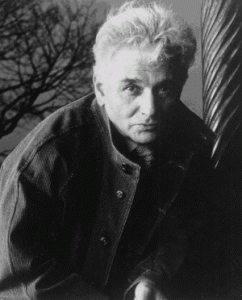
By Barry Mauer
Deconstruction raises controversy and confusion for American students, often because it is not put in context. Deconstruction is an activity, one of many, practiced by post-structuralists. Post-structuralists, following Jacques Derrida, had read the works of Roman Jacobson, a linguist, and Claude Lévi-Stauss, an anthropologist, who argued that logical structures, mostly based on binary pairs, underlay the structures of societies and of language. In other words, Jakobson and Lévi-Strauss claimed there were logical structures we need to know for any particular act, utterance, or relationship to make sense.
For instance, underlying the structure of our thinking are binary pairs such as living/dead, masculine/feminine, and sacred/profane. If you study a culture long enough, you can develop a schema of the logical structures underlying it. This schema does not exist in any particular text of that culture but is reflected in all of them.
Derrida claimed that these logical structures were inherently unstable. He pointed to the line separating the two terms and claims that, since the border between terms is shared by both, it defines them both in common. Thus, masculine and feminine are interdependent since the meaning of one requires the posing of the other as its opposite. Because one can’t have meaning without the other, the other is crucially part of the one. To illustrate this point about concepts sharing a border and defining each, consider the Taoist symbol for yin-yan. The black defines the white and is in the white and vice-verse.
In any case, the goal of deconstruction is to make us aware that the structures underlying our thinking and relationships are not neatly defined, eternally-fixed opposites, but are interdependent, messy, unstable, permeable, and changeable. Deconstruction isn’t really a form of literary interpretation at all, though people use it as that. It doesn’t mean “analysis,” which is the breaking apart of textual elements in order to see how they function as a whole. (The term “deconstruction” has taken on that casual meaning). Deconstruction focuses less on a particular text than it does on the logical structures that make a text possible.
Some of the key conceptual structures that Derrida deconstructed were the related pairs original/copy and speech/writing. For instance, he claimed that we normally think of speech as “original” and writing as a “copy.” He argued this logic was faulty because
- any sign, in order to be intelligible and useful as a sign, must be iterable, meaning repeatable.
- iterability is marked by difference––a sign only has meaning because it is perceived as different from other signs.
- writing is therefore “original” since it is a system of marked differences.
- speech is a “copy” of writing, or speech is
- the terms “original” and “copy” are themselves unstable because if meaning results from a system of differences, there can be no original and no copy of that system (like there can’t be an original and copy of the game chess).
By attacking the perceived stability of the binaries original/copy, writing/ speech, margin/center and presence/absence, Derrida was aiming to radically redirect Western philosophy.
In order to do a deconstruction, there is a two-step process. The deconstructionist begins by creating a schema of the logical structures necessary to make sense of a text. For instance, in James Joyce’s “Araby,” we identify such binary structures as alive/dead, masculine/feminine, sacred/profane, adult/child, and European/Oriental. Next, we make the reader aware of the instability of these terms. For instance, we claim Joyce’s text destabilizes the sacred/profane relationship, with the boy’s sexual interest in Mangan’s sister taking on religious qualities. We use any approach––logic, demonstrations, games––to make the reader aware of the instability of binary terms and thus to open the meaning of the text.